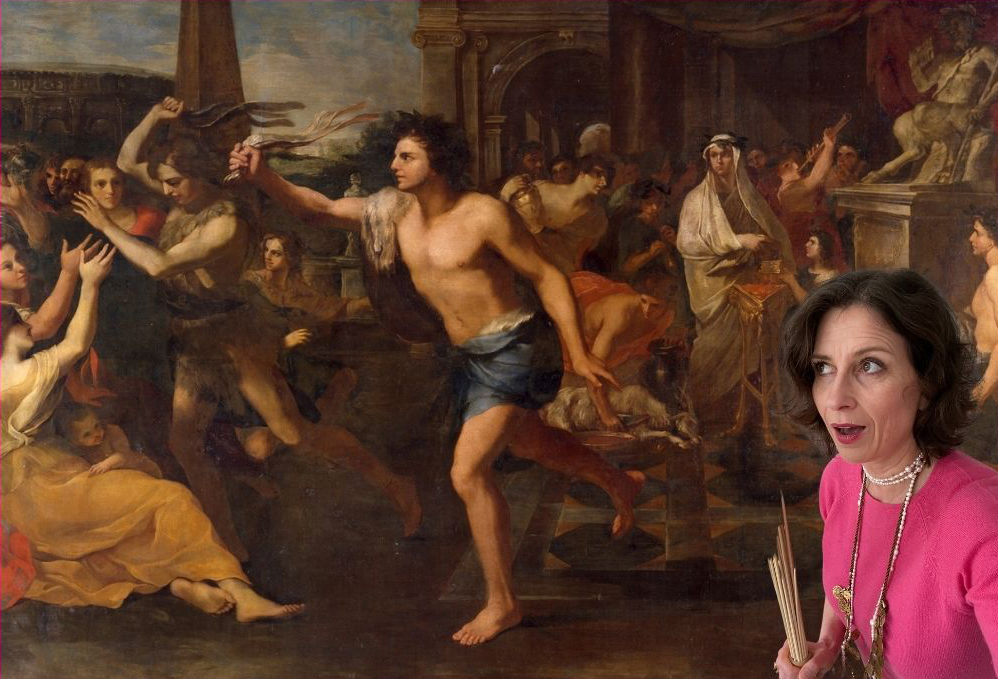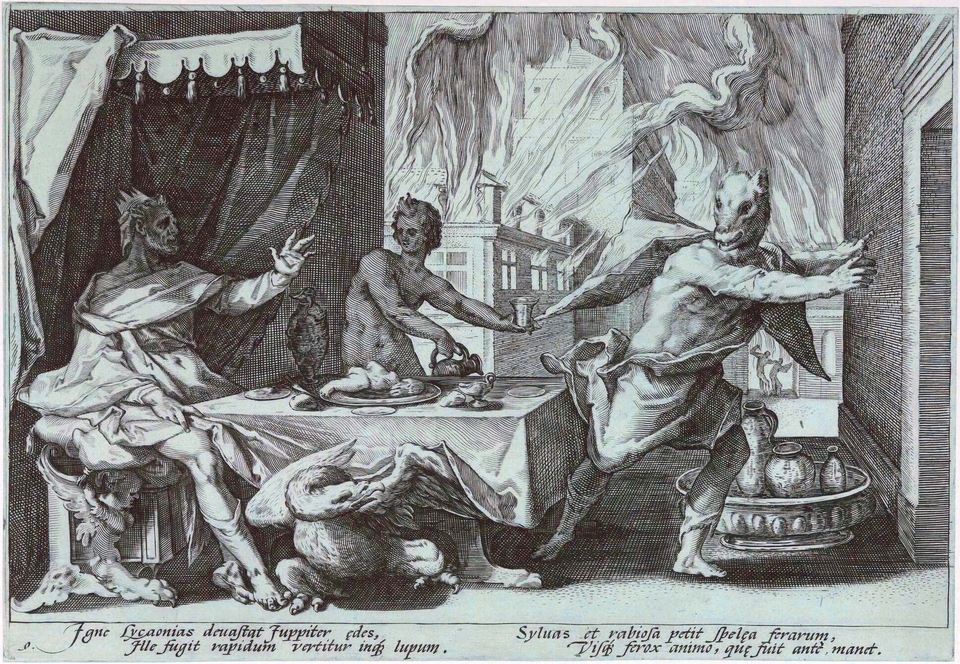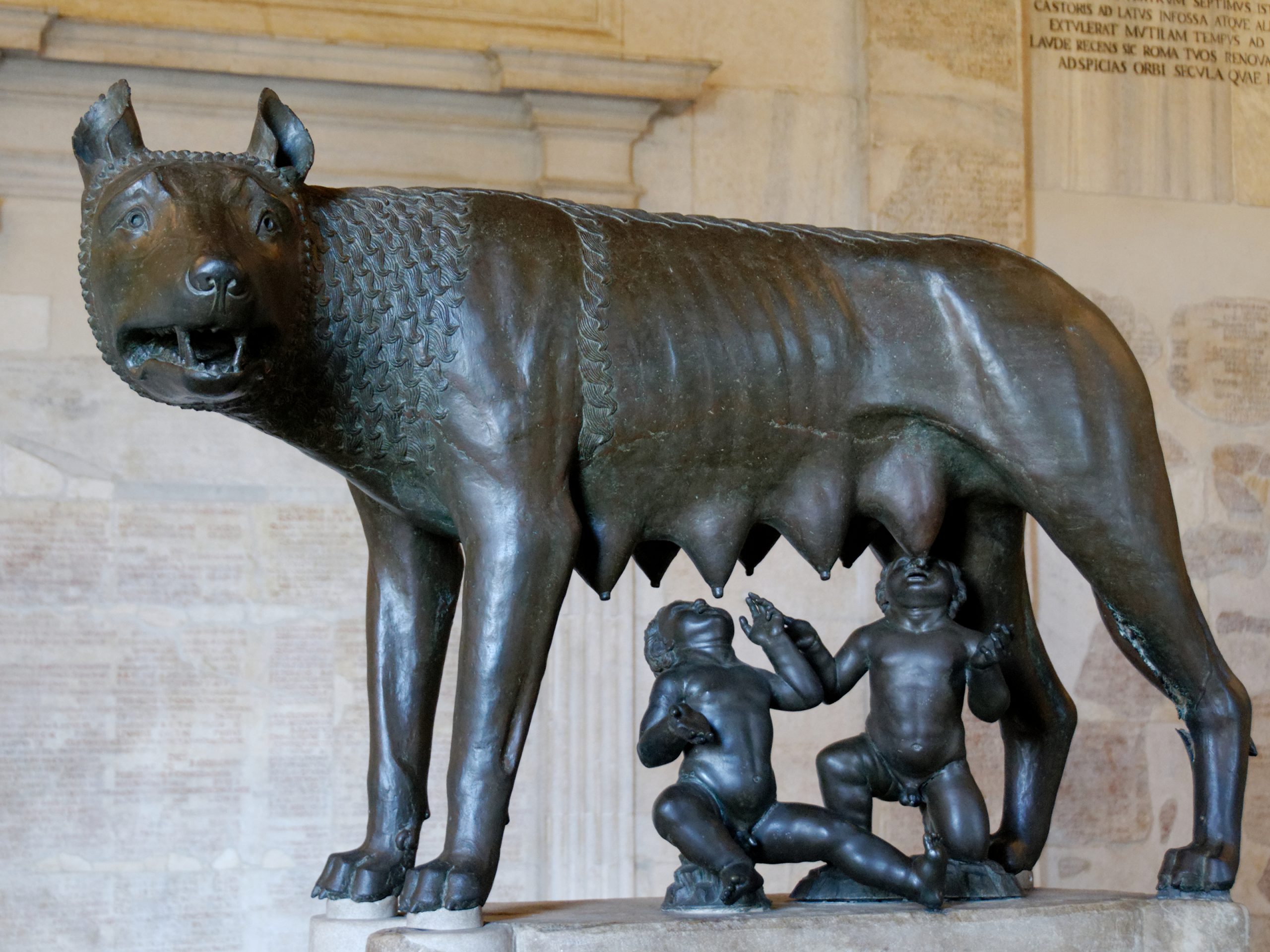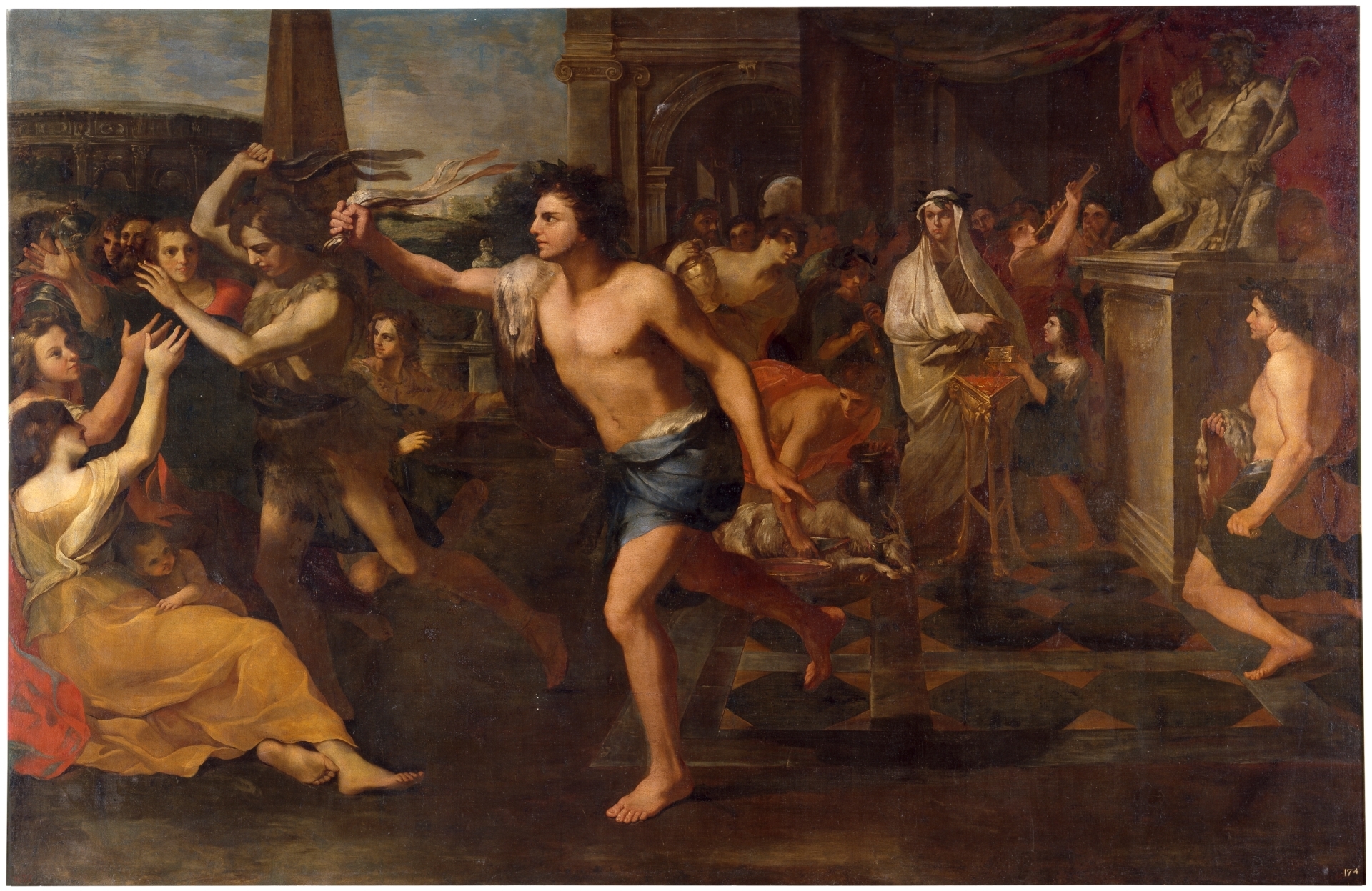I love Greek mythology and was intrigued that the story of Zeus and Lycaon may have led to the Roman festival of Lupercalia which took place on 15 February and was subsequently, and according to some sources, intentionally, eclipsed by Valentine’s Day.
The brief story of Zeus and Lycaon is that the latter served the God roast kid – as in child, not goat, for dinner to test his omnipotence. He should have known better because Zeus then turned him into a wolf. The legend led to an initiation ritual for young men; heaven knows what went on but it was enough to leave archaeological evidence.

Joining in the Lupercalia with my Hayo’u tapper. Not quite goat’s hide; actually not even similar!

Hendrik Goltzius, Zeus and Lycaon from Ovid’s Metamorphosis, 1589

Etruscan /Antonio Pollaiuolo, La Lupa Capitolina, 5th century BC and 15th century AD, Musei Capitolini, Rome, Italy
Jump from Greece to Italy and the idea of the Roman holiday of Lupercalia is born – and I haven’t just made a random connection, Livy and Plutarch and various other ancient philosophers and poets write about the fact that the Lupercalia has its roots in Greece.
The Lupercalia was centred around the cave in which Romulus and Remus were supposed to have suckled the she-wolf. Did you know that the famous Capitaline she-wolf sculpture is half Etruscan, from the 5th century BC, half early Renaissance because the figures of Romulus and Remus were added in the 15th century, possibly by Antonio Pollaiuolo? It amuses me that ‘Pollaiuolo’ means the son of a chicken farmer. I suppose the she-wolf was too busy to worry about chickens.
Back to the Lupercalia festival which was, as my grandma used to say, a ‘bit of a do’. It involved young boys running through streets in loincloths, although there is an argument to say that they didn’t even wear those, whipping women with the hide of a newly sacrificed goat. Pregnant women thought it would give them a healthy baby so they were completely up for it.
Then, as with many things, it started to get out of hand and was no longer the fun it once was. Step up the martyrdom of St Valentine on 14 February to distract and divert attention away from Lupercalia and towards Valentine’s Day. I think we can say that’s a win for the church!
As I always strive for accuracy, it should be pointed out that this is one hypothesis as to why the celebration of Valentine’s Day became more widespread, and there are almost certainly other factors at play.

Andrea Camassei, Lupercalia, 1635, Prado, Madrid
The video of this episode can be viewed here. To view the entire ‘Elevenses with Lynne’ archive, head to the Free Art Videos page.

Recent Comments